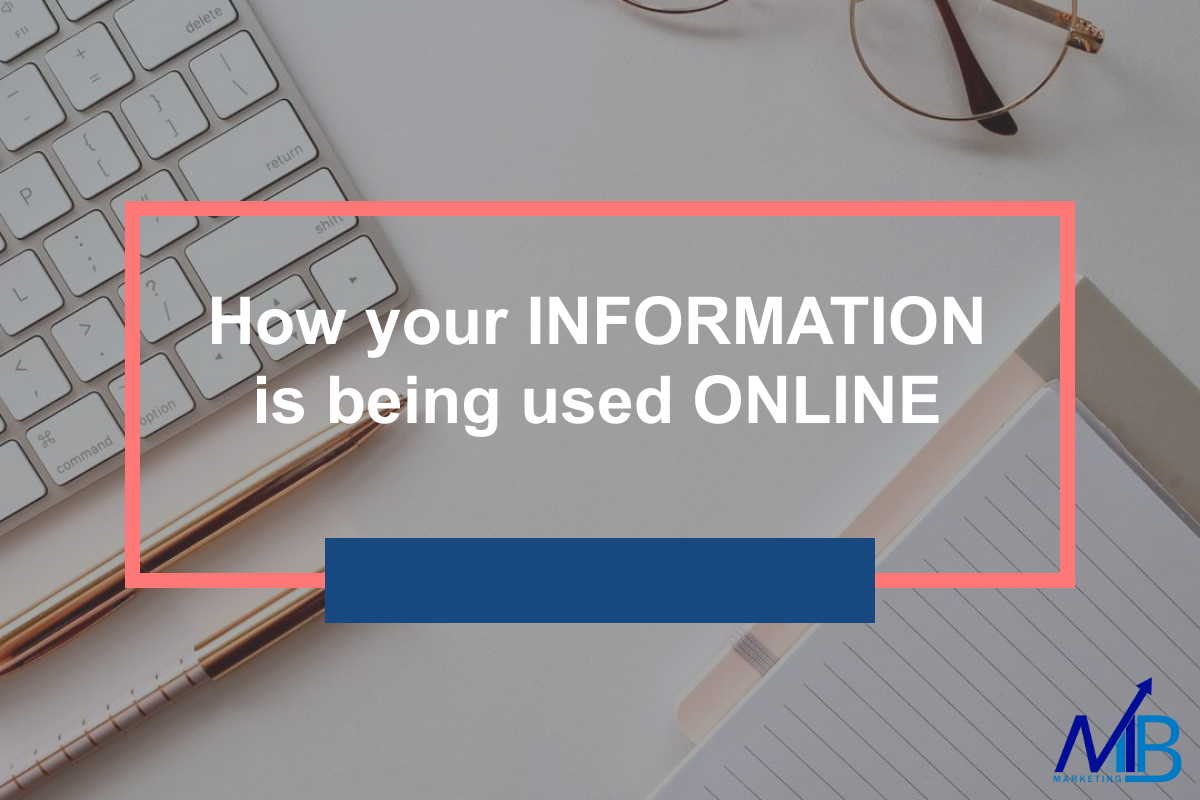The early days of the internet were like the Wild Wild West, in comparison to where we are today. Anybody could build a website, and quickly be on the first page of search results by typing the keyword that they wanted over and over on the page. The biggest concern for many internet users was choosing who their Top 8 MySpace friends were.
In 2020, things have changed a lot, most notably the tracking of your activity online to use it for advertising later. We must say we are very biased because knowing a user’s specific interests makes it much easier to run successful ads that are targeted to the audience who is interested in them. Yesterday, as I was driving in Glen Rose, I heard a radio ad for a jewelry store that was 90 miles away in Dallas. My first thought was that this was a waste of advertising spend because the target market is so far away from the store.
Being able to target users based upon their interests and locations allows me to show relevant ads to consumers, which I think is a win. However, privacy is important, and people have a right to know what information is tracked about them.
Before I show you a few ways to check your information, I’d like to do a short overview of how online advertising works.
First, online ads are auction-based. This is good for the consumer because it promotes better ads. Google, Facebook, and other websites want users to stay on their website as long as possible, and they understand that to do this, they cannot annoy users with irrelevant or annoying ads. We all change the radio station immediately when an annoying ad comes on that we don’t want to listen to, and we generally have the same behavior if we are annoyed by an ad online. Auction based ads are determined by a few things, like relevancy, cost, and quality of the advertiser. This encourages advertisers to create better ads, websites that are easier to navigate and improve the overall consumer experience. Advertisers with a bad experience will have trouble getting their ads shown to users, no matter how much they are willing to pay.
Second, you can’t always know where an ad generates from. As an advertiser, I can pay any number of people and have my ads show up anywhere. Many of the ads that I pay Facebook to run, show up on partner websites outside of the Facebook platform. Likewise, I can pay other companies to advertise on Facebook. Ad placement is all relative and works through a network of “placements” on where an ad is shown.
Third, how I am advertising to you can be determined by a number of factors. If you have visited my website, I can directly advertise to you through retargeting marketing. Also, if you visit a retailer in-store and they collect identifiable information, such as phone numbers, credit card numbers, or email addresses, that information can be uploaded and matched to run advertisements to you. If I am trying to expand my reach beyond current customers, then I can run ads based upon your online interests, or your location. Usually, ads are run in a combination of all three tactics for specific targeting.
All of this has evolved to allow advertisers more control. Personally, I prefer to be shown ads that are relevant to my interests, which in turn creates a better online experience for me. However, users do deserve to know what information is being collected from them and opt-out of these advertisements. Also, your interest history creates a lot of assumptions, some of which may be incorrect. When I was looking at my profiles, there was some information that was very correct (my interests in pets, dogs, pet care), and some were incorrect (Google made the assumption that I was married, which was incorrect).
Social media networks and even tech sites have a lot of stored information about you. Why are they doing that? Simply because they want to collect information about you and use that to sell advertisements you can’t ignore. Now to discover what data these social media and tech sites get from you, check the following steps.
It may be time-consuming for you to check all your activity logs one by one but if you go to this link, you’ll get all the links to activity logs that provide you all accumulated Facebook activities into a single surge. Now, if you wish to have a copy of everything you’ve done on Facebook, you can simply do it here.
If you want a list of activities you’ve made using Google services, you can check it on My Activity Page. To see what Google is collecting from you, Privacy Checkups will be of help. It will lead you to your settings and reveal data Google uses to personalize your experience.
If you wish to know the topics Instagram perceives you’ll like regarding ads, you can look to Settings > Security > Access Data > Ads. Now, it is also possible for you to download your Instagram data including your photos and captions, just go to the same Privacy & Security Tab and scan for the Data Download section. Viola! You can now make a request for a download link of all your data.
- Snapchat
To grab your stored information from them, you can go to this page. You can submit a request and the company will send you your data in a zip file ready to download.
If you’re on Twitter and would want to have a copy of your information, go to your Account Settings page >Your Twitter Data tab> Download your data” section. They will send you the link to a zip file of your information to be downloaded just like in Snapchat.
Since all mentioned above usually use data collected from users for advertising purposes, the big question is “How ads are tracked across the web?” Ad tracking is the process of looking into the effectiveness of an ad campaign. It will measure the success of an ad through clicks, views, behaviors, and impressions across various websites. There are five major ways to do this:
- Tracking URLs
This is where UTM codes are added to regular URLs to track effectivity of a campaign. This method help advertisers determine the number of visits, leads, and conversions they’ve generated for a certain ad campaign. If you’re interested in how to use UTM codes in tracking campaign, you can check this blog.
- Tracking Pixels
This is usually added in an email, display ad, or simply on a webpage. Tracking pixels works best if advertisers wanted to know the conversion path of their online campaigns. It will provide ideas on how users are interacting with their ads and guide them for a better user experience.
- Cookies
We usually encounter sites having their pop out reminder that they are using cookies to improve their site performance and will be asking for consent. Cookies are used for ad retargeting campaigns. It monitors user’s web activity and habits including their interests. It can also collect your browser configuration, location, and preferred language. All these data will be analyzed to serve users with ads that they might be interested in based on their previous interaction with the site.
- Tracking ads with Google
To start with this one, advertisers must need to have a Google Marketing Platform account. Depending on the company size, you can either have a small business account or an enterprise account to track the success of your campaign.
- Facebook Ad Tracking
Facebook offers various methods for ad tracking but the most common one is the use of Facebook pixel. The function of this is similar to tracking pixels I mentioned above. You just need to set up a pixel for a certain page and if there is an action, it will send information to the Facebook Events Manager account. To know more about Facebook pixel, you can check this page. Also, you can make use of UTM parameters in Facebook for ad tracking which will be made available in Ads Manager.
We have been living in an era where almost everything is delivered online. Everybody has been using social media sites where information about us has been collected for various purposes. It is our prerogative to secure our information and how to take control of it. Be informed is the key!
To see the step by step how to on checking the information Facebook has on you, read this help article here: https://www.facebook.com/help/1700142396915814
To review the information that Google uses to choose your ads, follow this link: https://adssettings.google.com/
To check the information that the AdSense network uses for your ads, follow this link here to run a check. https://optout.aboutads.info/
I hope that this article has helped you to understand how your information is being used and allowed you to customize your choices as you wish.

